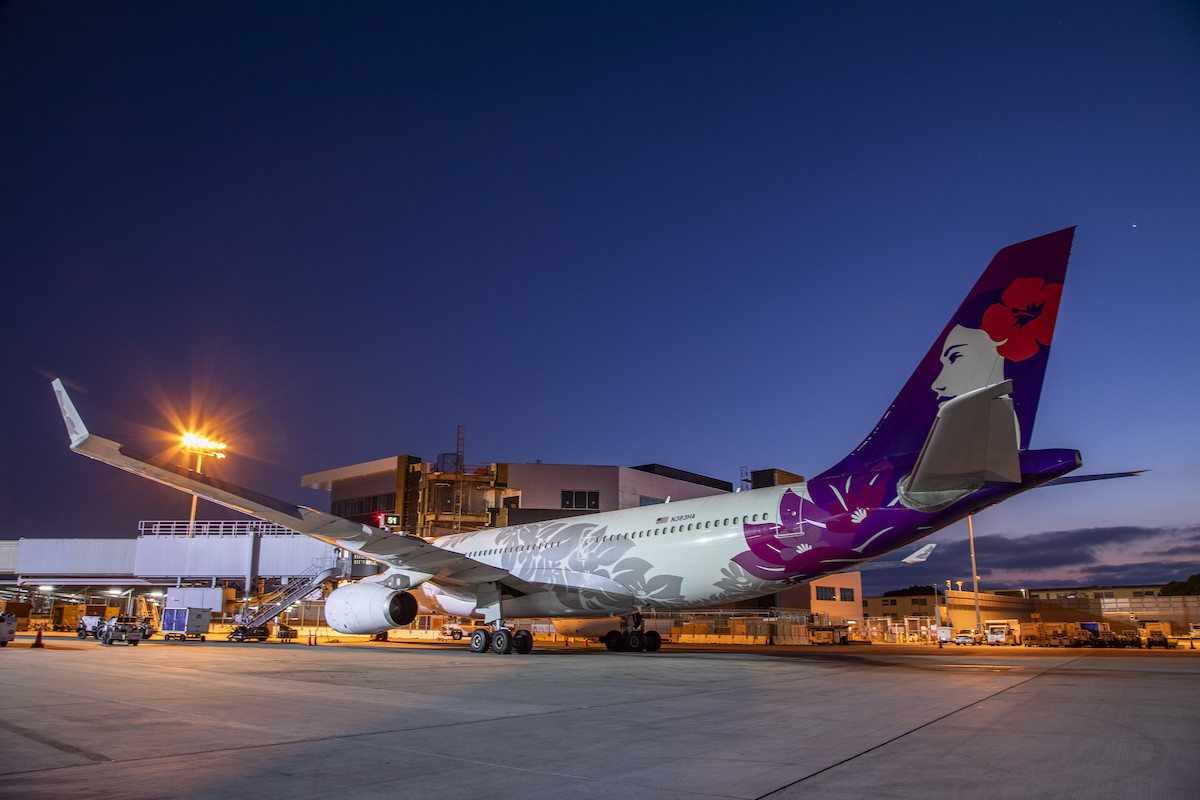Alaska Air Group announced Tuesday that it will launch its first two international routes out of Seattle-Tacoma International Airport following its merger with Hawaiian Airlines.
Ahead of its investor day in New York, Alaska said the routes will be to Tokyo Narita and Seoul Incheon. The Seattle-Tokyo route will launch in May and the Seattle-Seoul route will start in October.
The company plans to operate at least 12 international routes out of Seattle by 2030. Seattle, a major hub for Alaska and where the company is headquartered, will become a “global gateway” for long-haul international flights.
The international expansion comes after Alaska acquired Airbus A330s and Boeing 787s from its merger with Hawaiian. Prior to the merger, Alaska operated an all-737 fleet. Alaska said it would operate the routes with Hawaiian’s A330s.
Alaska said the Seattle-Tokyo route allow it to right-size capacity out of Hawaii and Japan, a key market for Hawaiian that has been weak post-pandemic. The company added that it would reposition the aircraft for Hawaiian’s Tokyo Narita route to Seattle, while adding increasing capacity between Honolulu and Tokyo Haneda from 12 to 14 flights a week.
At the time the merger was announced, Alaska CEO Ben Minicucci said he believed the advantages of a diverse fleet outweighed any potential disadvantages.
“I think the advantages far outweigh the complexities that we have to deal with,” he said during a press briefing last December. “And you know, I’m sure there will be some things that we can rationalize going forward.”
Alaska Goes All In on Premium
As high demand for premium continues, carriers have been investing more in their co-branded credit cards and premium products.
To cater to those travelers, Alaska also plans to roll out a new credit card. The card will allow customers to earn elite status faster and will include more benefits than Alaska Airlines Visa Signature card.
Alaska is also investing more in premium lounges in San Diego and Honolulu. The airline has plans to open a new flagship international lounge in Seattle in 2027, but released few details on what the lounge would look like.
The company expects these initiatives to bring in an additional $800 million in revenue and drive most of its profit growth over the next three years.
Alaska will be competing with Delta Air Lines, which also has a hub in Seattle, on these routes for high-spend travelers.
“We expect an unprecedented level of revenue growth at Alaska over the next three years,” said Andrew Harrison, Alaska’s chief commercial officer, in a statement.
Most major U.S. carriers have spent the year expanding their premium offerings due to the sustained demand. During Delta’s investor day, Delta president Glen Hauenstein said premium products and its loyalty program made up 57% of the carrier’s revenue.
Even ultra-low-cost carriers have been looking to offer customers a premium product after struggling to make a profit for years. Spirit Airlines said it would roll out premium seating that blocks off the middle seat and Frontier Airlines announced last week that it would launch first class seats in its cabins.
Alaska said in July it would increase its premium seating on its Boeing narrowbody fleet by 29% and is currently developing plans to increase such seating on its widebody planes.
Airlines Sector Stock Index Performance Year-to-Date
What am I looking at? The performance of airline sector stocks within the ST200. The index includes companies publicly traded across global markets including network carriers, low-cost carriers, and other related companies.
The Skift Travel 200 (ST200) combines the financial performance of nearly 200 travel companies worth more than a trillion dollars into a single number. See more airlines sector financial performance.
Read the full methodology behind the Skift Travel 200.

